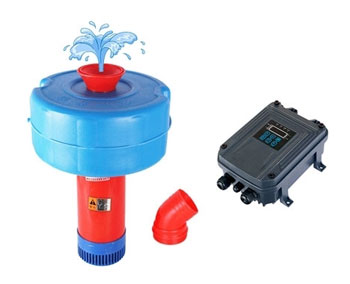What is Aerator Pump?
Sun, Mar 21 by ATO.com
Aerator pump is usually also called air-liquid mixing pump, ozone-water mixing pump, air-float pump, air-water mixing pump, mixed air pump, aerator pump, air-liquid pump, vortex pump, which is suitable for various industrial waste water treatment such as food, pharmaceutical, paper, chemical, biological engineering, beer, etc.
- The main roles of aerator pumps include.
- Generating and maintaining effective air-water contact and maintaining a certain concentration of dissolved oxygen in the water in the case of continuous consumption of oxygen by biological oxidation.
- Generating sufficient mixing action and circulating water flow within the aerator zone
- Maintain sufficient velocity of the liquid to keep the bio solids in the water in suspension.
A variety of aerator equipment has different characteristics, so the use of the aerator pump and the use of the scope of a variety of different, therefore, in the process design, according to the actual needs and the cost that the enterprise can afford to choose aerator pump, the existing aerator pump is divided into submerged aerator pump and surface aerator pump two categories.
- Advantage Description:
- Oxygen transfer rate
In addition to the high efficiency of diffusion in the liquid with small bubbles of air, the turbulent flow state of the jet aerator pump is a constant renewal of the gas-liquid contact surface, which also facilitates oxygen transfer. parameter is the ratio of the oxygen transfer coefficient in sewage and clear water. Compared with most other micro porous diffusion theories, the constant renewal of the gas-liquid contact surface of MTS jet aerator pump makes the alpha coefficient greater. - Process applicability
The jet aerator pump can be manually controlled individually between oxygen supply and mixing. This allows the operator to adjust the amount of air as needed, while maintaining agitation can be done by circulating the liquid. The combination of manual and automatic DO meter control allows energy savings at low loads. Maintaining agitation by stopping the air supply is ideal for biochemical systems with alternating anaerobic/aerobic cycles. - Full agitation
In addition to the vertical agitation energy generated by rising bubbles, the circulating water also generates energy in the horizontal direction. Unlike some air diffusion systems, the MTS jet aerator pump does not need to cover the entire bottom of the tank to provide adequate agitation, saving much installation time and installation costs. - Reduce exhaust gas emissions and water mist
As the atmospheric quality standards are getting higher and higher, we are becoming concerned about the generation of exhaust gas and water mist in the aerator process. Due to the high oxygen utilization rate of jet 750w aerator pumps, less gas is produced, requiring less equipment and capital for exhaust gas collection and treatment equipment. jet jet aerator pumps are a submerged design, which does not produce the water mist that has become a problem with most surface aerators. - Easy maintenance
Jet aerator pumps make full use of common ancillary equipment, such as centrifugal pumps and centrifugal fans. All moving parts are located outside the pool for easy maintenance. The high velocity of liquid and gas in the jets reduces the potential for clogging and also lends itself to optional back washing. - Flushing device
Jet aerator pumps with flushing devices are useful to eliminate the expensive need for aerator pump maintenance and pool emptying during the warranty period. Flushing clears clogged aerator pump nozzles. It is similar in nature to an air lift pump. This classic flushing operation takes only 5 minutes and one operator to complete. This unit can be designed for automatic control and remote operation as required. Jet aerator pump flushing units are widely used in municipal waste water and industrial waste water (e.g. paper and pulp mills).

